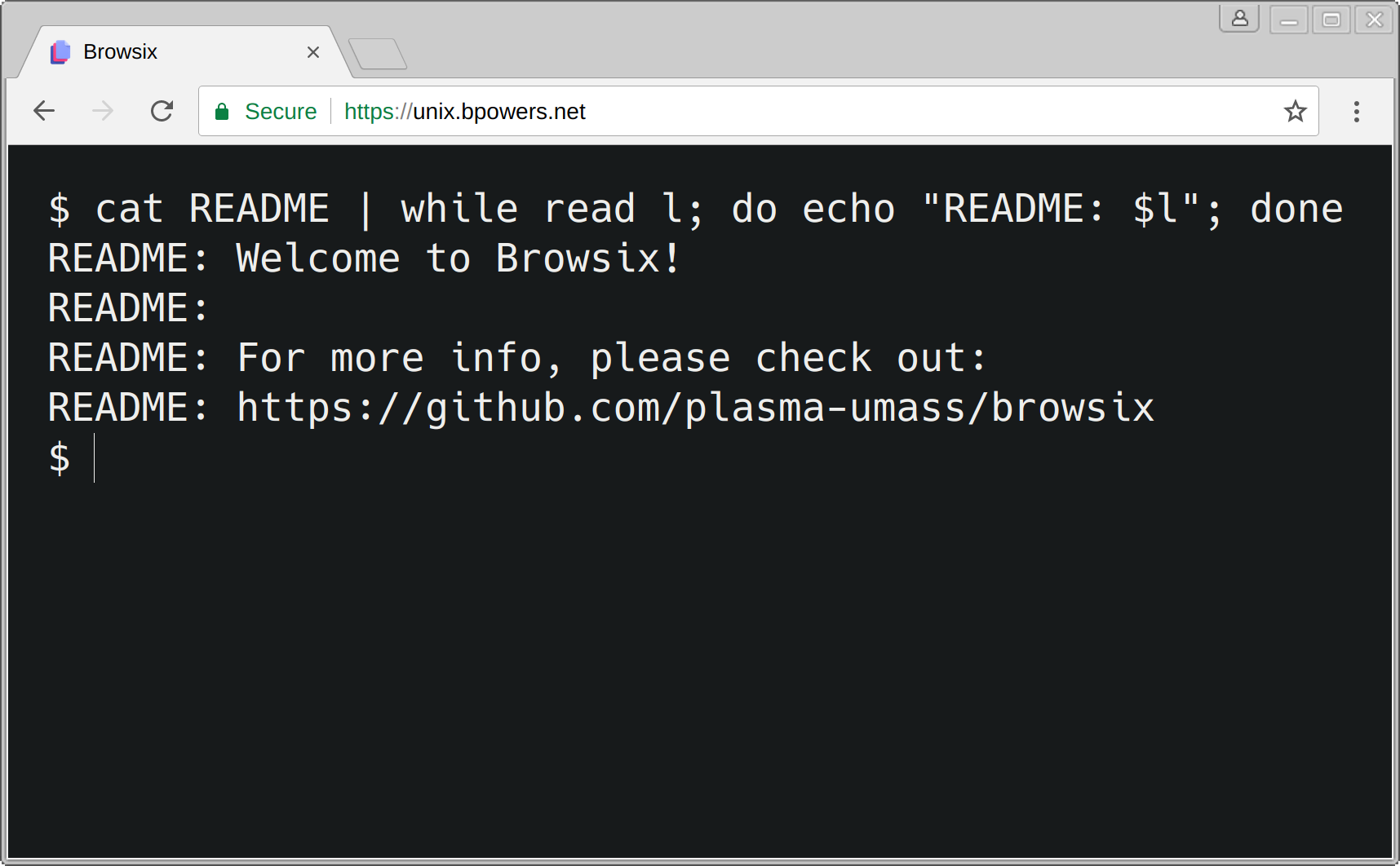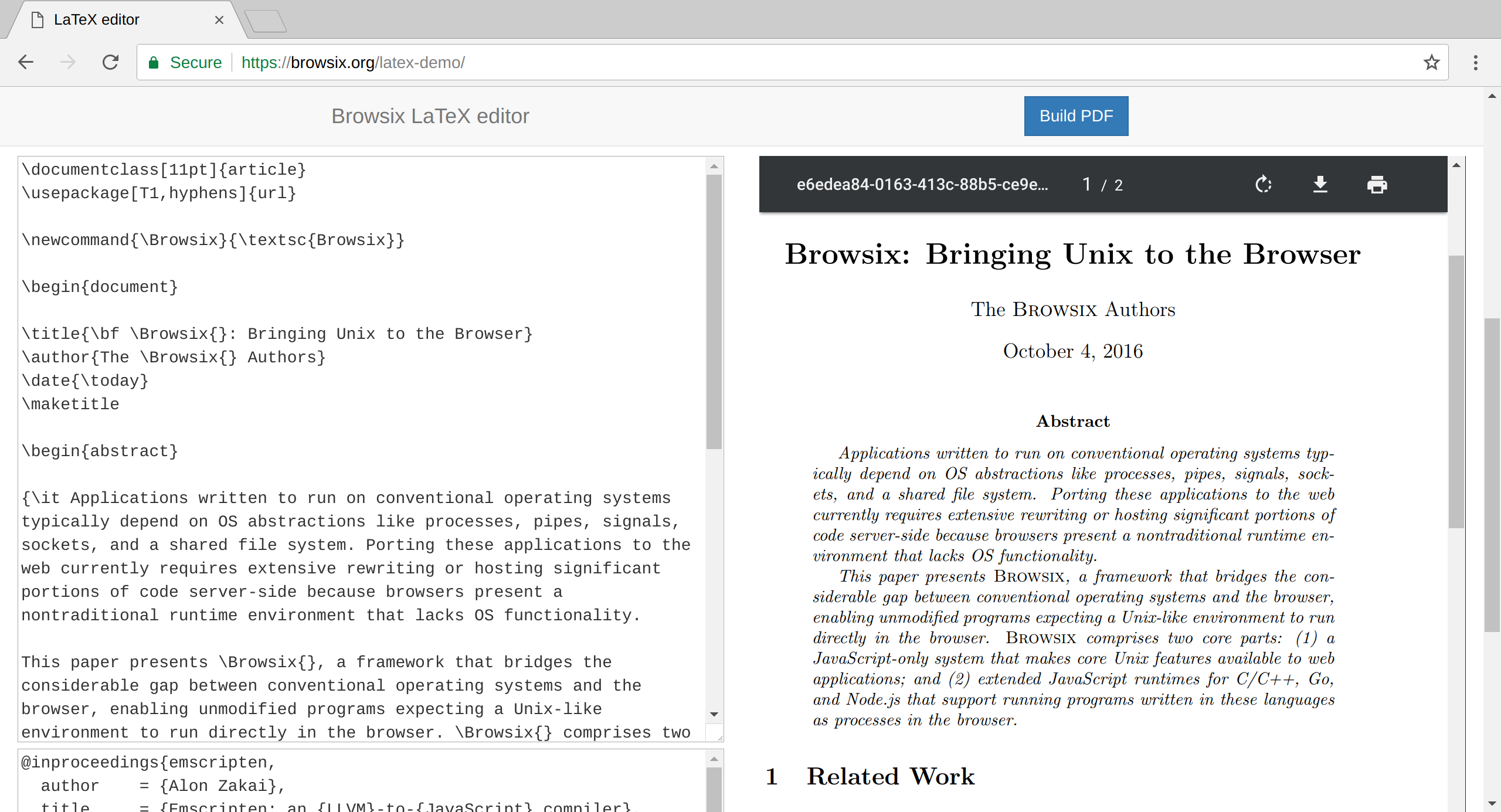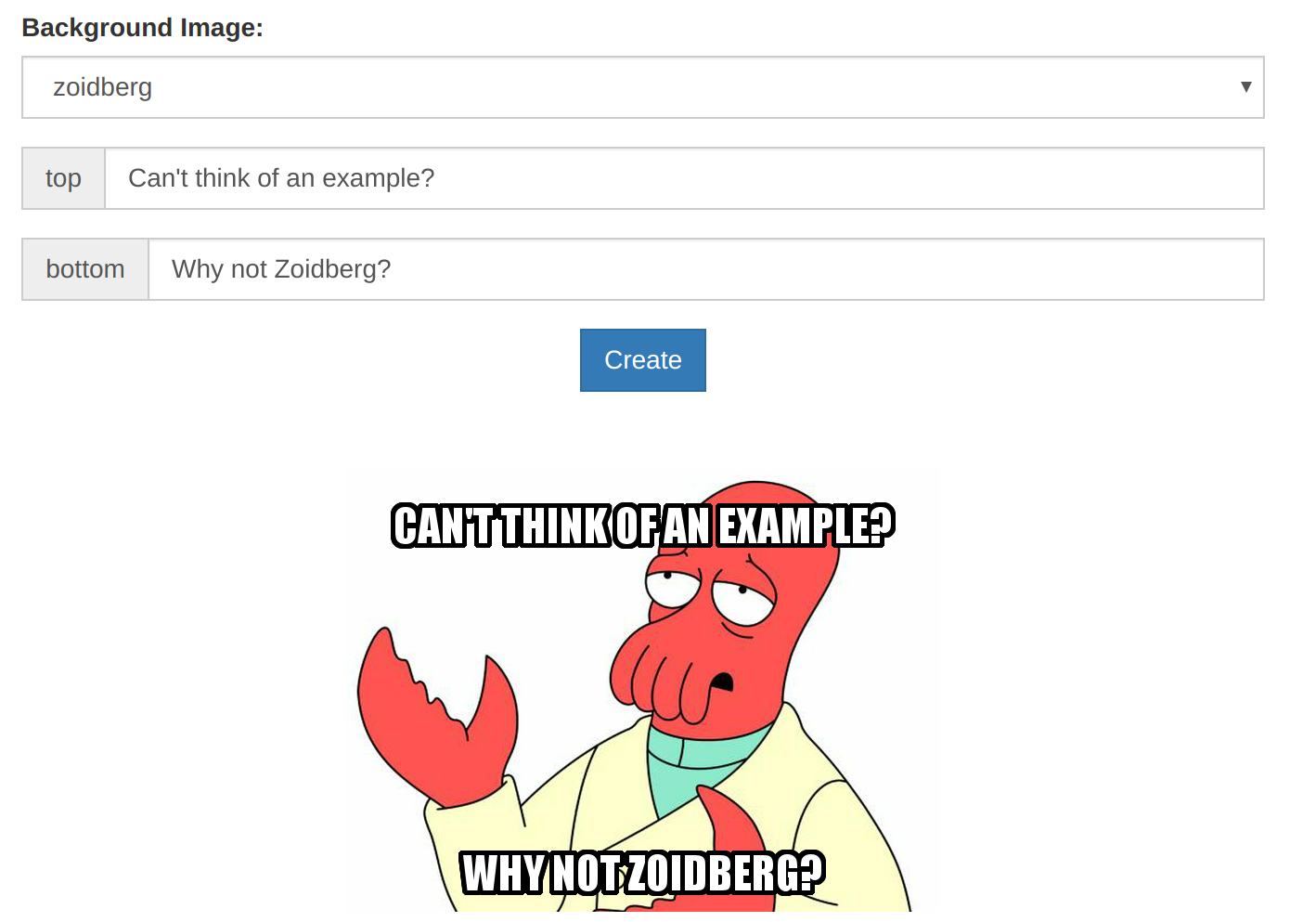Examples
Terminal
A Unix terminal exposing the dash POSIX shell lets developers compose functionality and inspect Browsix state in a familiar way. (view source)
LaTeX Editor
In-browser editor that runs pdflatex and bibtex to generate PDFs. Required < 150 LoC to orchestrate these applications. (view source)
Meme Generator
Client/server web application written in JavaScript and Go. The Go server blits text over images using off-the-shelf libraries and runs unmodified under Browsix. 30 LoC policy in client chooses to route requests to cloud or to in-browser server process. (view source)



